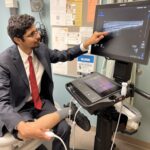This year, rheumatology professionals in the U.S. and across the world will descend on the Windy City (Chicago) for ACR Convergence 2025. This meeting is the premier gathering place for up-to-date rheumatology education. Although the education sessions provide rich syntheses of evidence you can apply to your next patient, the real treasure is in the…









